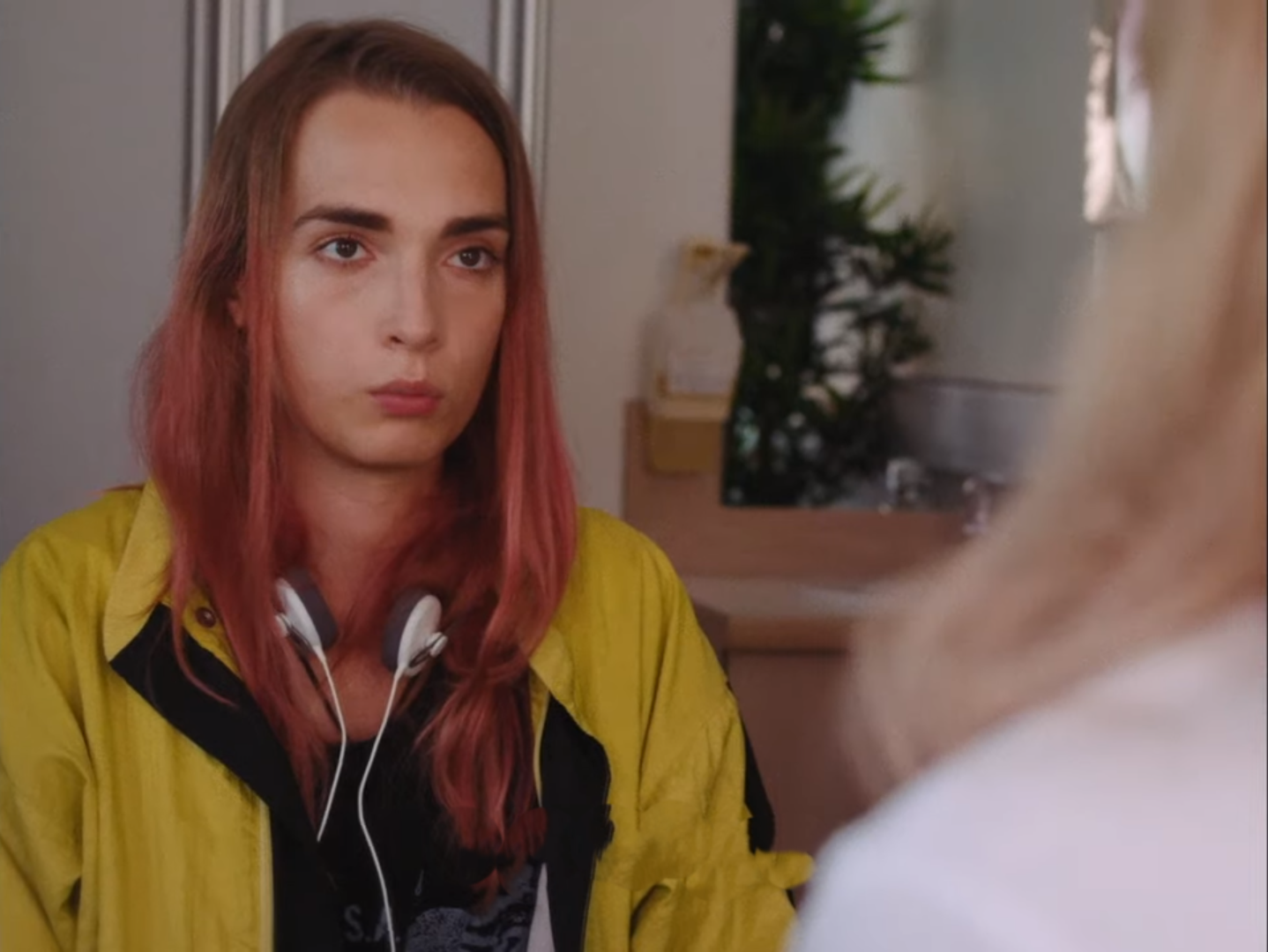
In recent times, gender and specifically LGBTIQ+ issues have increasingly become a matter of concern globally, but also in Nepali society. This is also the topic depicted in Belgian director Laurent Micheli’s 2019 film Lola and the Sea, in which the titular character (Lola) is rediscovering herself as a trans woman. The plot starts with her decision, to turn from Lionel into Lola, which separates her from the family so much that due to the conflict with her father, she ends up missing the funeral of her mother Catherine.
The female lead, played by newcomer Mya Bollaers, and her father Philippe (Benoît Magimel) unwillingly go together on a road trip to fulfil Catherine’s last wish for her ashes to be dispersed into the sea near her childhood home. On this journey, their relationship gradually transforms and their personalities are revealed.
The tension further accelerates with Lola smoking in front of her father and using explicit language signifies the level of contempt that she has against him. Similarly, Philippe keeps calling Lola by her dead name and using the male pronoun to address her. He clearly is not able to accept her present identity – he wants his son back. In one scene, he gives money to Lola for her surgery, showing a softer side, but later on, he does not go back home with her. Such ambiguous instances might create confusion among the audience about their relationship.
The score which features opera music, soft piano tunes and a song like Four Non-Blondes’ “What’s Up” reflects the frustration and desire for freedom of the protagonist. In one of the key scenes, in a carwash where the water cleans the red paint splashed by Lola out of defiance over the windshield which becomes a potent symbol implying Philippe’s reflection and a certain extent of settlement of a dispute between the two protagonists.
Despite containing some, not fully accomplished elements, Lola and the Sea is a movie that truly deserves your attention. It goes beyond portraying the hardships and struggles of its characters; it serves as a profound lesson on universal motivations behind transformation.
When Lola emotionally says, “I will feel fulfilled,” in response to Philip’s questions about her motives, the film truly comes into focus, revealing its poignant message.

Everybody who has considered changing their gender can relate to Lola. There are plenty of examples of the bitter experiences that people around us have faced due to such a decision. They are seen differently in society, not respected for their decision, and their transition is most often not accepted. A scene where the police use the word “bullshit” when addressing Lola, as she tells them she is trans, serves as a testament to this.
But what is more important and frustrating for a person in transition, it is not just the society that does not accept them, it’s also their closest family. Till the end, Philippe is reluctant to accept Lola as a transwoman.
This Belgian-French film is equally relevant to Nepali society, where people from the LGBTIQ+ community are still struggling for their identity. Due to the prevailing conservative mindset, a lot of Nepali LGBTIQ+ people have been unable to open up about their gender. There are many instances where they are subject to harassment and deprived of opportunities just because of their gender.
Recognition and acceptance of LGBTIQ+ issues are slowly achieved through public discourse and media, and cinema can play a key role here. Nepali cinema rarely depicts such characters and it is high time for our filmmakers to address these topics, which could conceivably bring about at least the beginning of a change.


























